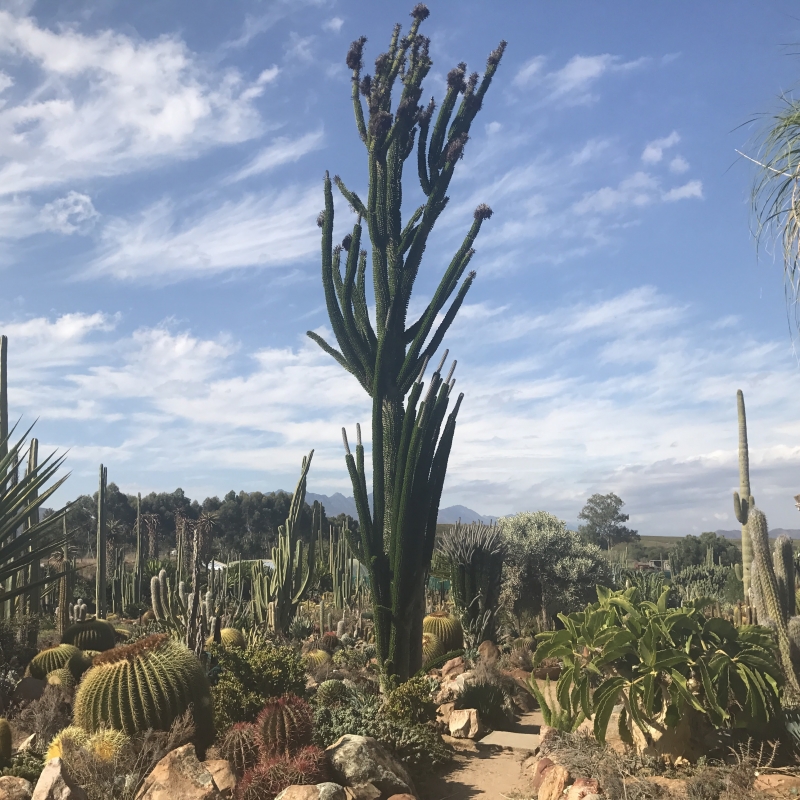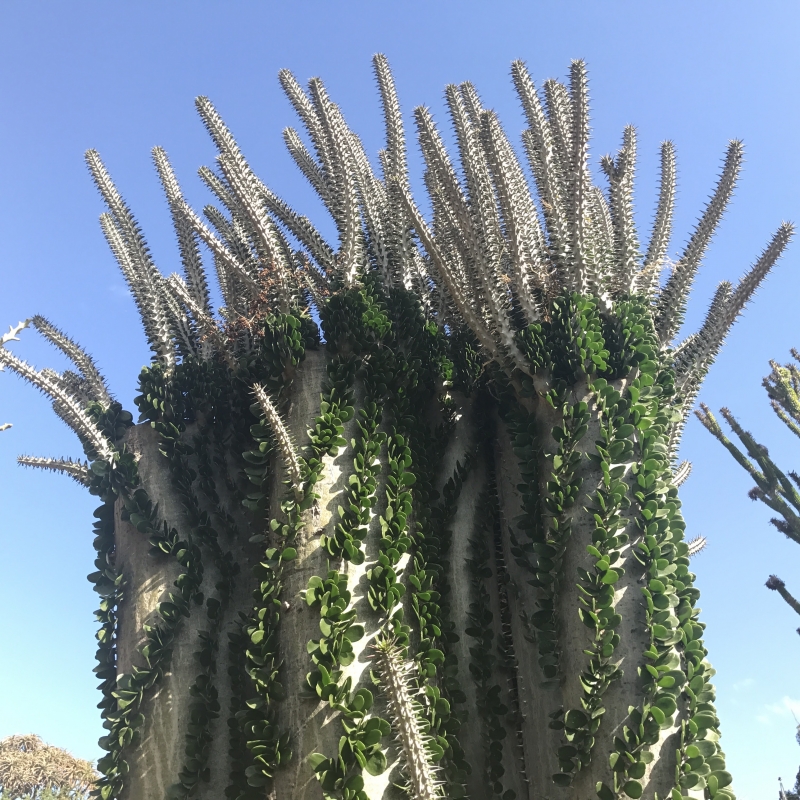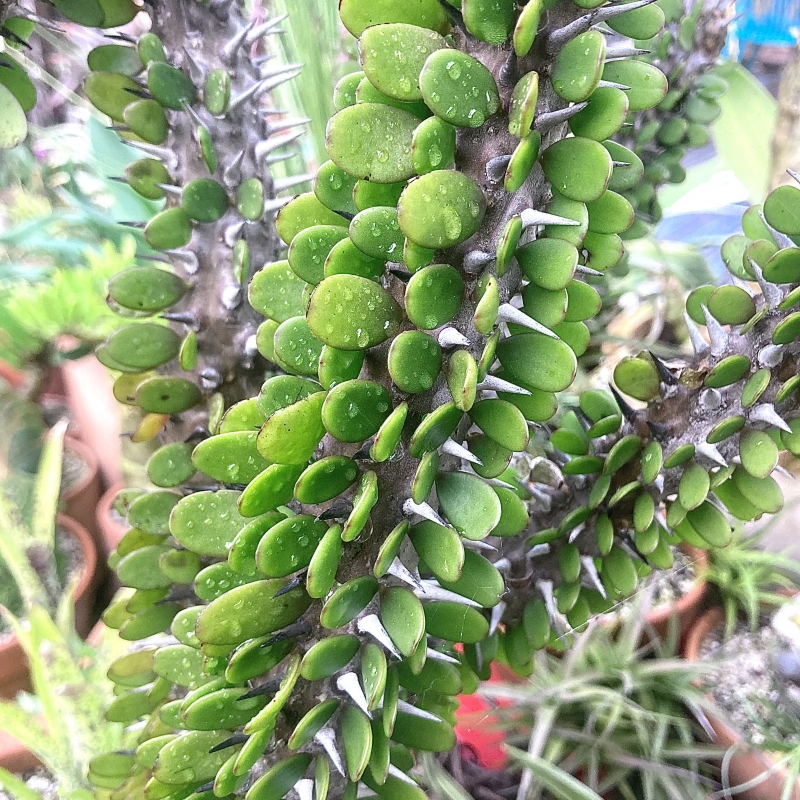Alluaudia procera
Madagascar ocotillo
Whimsical succulent with upright meandering habit, occasionally branches. Round leaves nestled among thorny columns. Winter/drought deciduous. Appreciates perfect drainage and dry winters.



 |
height |
6–20ft |
 |
width |
2–6ft |
 |
tolerates |
Drought, Deer , Heat, Narrow Planting, Pots, Rooftops, Wind |
 |
water
needs |
Low – Moderate |
 |
water
info |
This plant is from arid areas of Madagascar and as such likes to go totally bone dry between waterings, making it very low-maintenance. To get good healthy growth your plant doesn’t want to sit around totally dried out during its growing season. Once it is dry, water it.
This plant comes from an area with summer rainfall and is actively leafed out and growing during that time, when it is forgiving of overwatering errors. During winter dormancy allauaudia often shed their leaves and should be kept extra dry and won’t tolerate overwatering. Often, with California winter rains, leaves will persist through winter and then briefly defoliate before regrowing during summer.
Remember that if kept in a small pot your plant will want more frequent watering.
Leaf defoliation during summer is usually a sign that the plant is underwatered. |
 |
hardy
to |
30F |
 |
exposure |
Part Shade – Full Sun |
 |
indoor
outdoor |
In or Out |
 |
drainage |
In Ground: Cactus Mix, In Pots: Cactus Mix, Requires Perfect Drainage, Tolerates Sandy Soil |
 |
fertilizing |
All Purpose 1/2 Strength, Low Needs |
 |
origin |
W Madagascar |
 |
california
native |
No |
 |
sunset
zones |
13, 16, 17, 21–24, H2 |
SUNSET ZONES MAP

Growing Notes
Protect from frost especially when young.
To get a bushier plant let it grow for a bit and then cut it back. Several new heads will replace the single trunk. This will also happen if the grown point is damaged. The photo here of a large tanks with my new growth points is an example of how this plant responds to a severe pruning.
While not the easiest plant to root, producing these by cutting is possible and often done by wholesale growers. Cut a stem, let it dry completely before adding rooting hormone and planting in a fast draining mix. Do this during the summer growing period. Keeping the cuttings warm will help them establish new healthy roots.
Occasional pale green flower umbels are held at the growth point.
Special Interest
The Madagascar ocotillo gets its common name from its similar look to the ocotillos (Fouquierias) growing in the Southeast United States. While visibly similar they evolved worlds apart and are completely unrelated - driven into this form by a similar desert environment. This is known as convergent evolution.
Though this plant has sure done its best to prevent predation (wow talk about a lot of thorns!) it is still eaten by lemurs, who deftly climb allauaudias and nibble the succulent leaves between thorns.
Rumor has it that Dr. Seuss had these growing in his neighborhood growing up (along with Beaucarnea recurvata) which inspired his alien looking plant drawings!
More Info
Isn’t this really a houseplant? Well that’s a tricky question. In general this type of plant makes a great houseplant, but this specific plant hasn’t been grown to be a houseplant. Houseplants are grown under regulated conditions and with sterile soil, setting them up to thrive in your home. When outdoor-grown plants are taken indoors, they tend to transition poorly, often becoming magnets for pests. That said, if you decide to live dangerously and bring this plant indoors, here’s some advice to help you out. Start by unpotting the plant and removing any loose soil. Next, preemptively treat the entire plant, including the roots, with an insecticidal soap. Be sure to treat the roots gently throughout this process. Use a new nursery can or sterilize the previous one with bleach. Repot the plant in a fresh mix and then water deeply with the insecticidal soap mix. Be sure to keep an extra close eye out for any pests that might pop up. Always consider the risk of introducing pests to your other houseplants.




